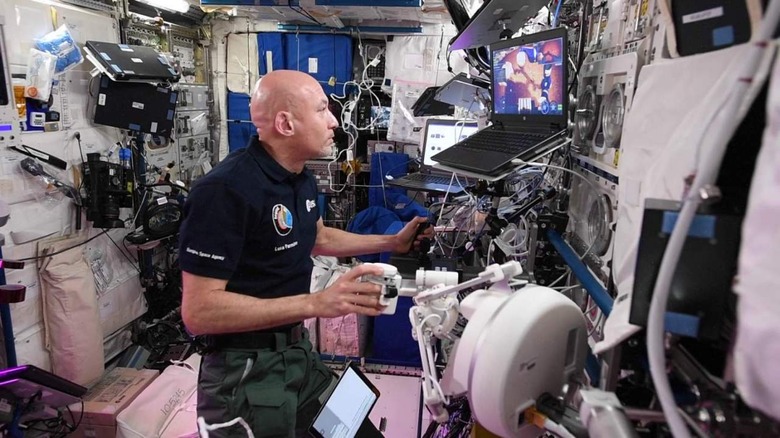This Remote-Control Robot Takes Its Orders From Space
One of the biggest challenges in space exploration is the dangerous nature of space environments: many places we want to explore have no or low levels of oxygen, low or micro-gravity, and potentially dangerous space radiation. That's why we send out robots like the Mars rovers Perseverance and Curiosity, which can explore environments over months and years which would be dangerous for humans.
But there are still lots of things which humans are good at that robots can't do. Even as robots get better at autonomous decision making, human explorers are still much better at interacting with their environments in many ways. The European Space Agency (ESA) has been working on this issue by finding a way to have the best of both worlds, where robot explorers send haptic feedback to human controllers who can "feel" the objects that the robots interact with.
The idea of ESA's Analog-1 mission is to get an astronaut on the International Space Station to control a robot located on Earth. The Earth-based rover has a gripper tool which has similar mobility and dexterity to a human hand (via ESA) which can pick up rock samples. The astronaut controlling the rover, Luca Parmitano, got haptic feedback from the robot's gripper which helped him to "feel" the sample the robot was collecting.
"Imagine the robot as Luca's avatar on Earth, providing him with both vision and touch," said lead researcher Kjetil Wormnes when the first experiment was conducted in 2019 (via ESA). "It was equipped with two cameras – one in the palm of its hand, the other in a maneuverable arm – to let Luca and the remotely-located scientists observe the environment and get a close-up on the rocks."
A helping hand for moon missions
Since then, there have been a total of 11 experiments conducted in the Analog-1 mission, and the results have been recently published in the journal Open Astronomy. The series of experiments had the rover located in a simulated lunar environment located in an ESA facility in the Netherlands. Parmitano's task was to select and store rock samples, which involved him controlling the robot's arm and getting haptic feedback which simulated feeling the weight of the samples as the rover moved them.
The hope is that the technology could be used in future moon missions, as a way to explore environments in a safe way. With NASA's upcoming Artemis missions to the moon, which ESA will be contributing to, there is an increased interest in getting back to the moon and exploring it once again. It's been over 50 years since humans visited the moon but technology like the Analog-1 could help us explore hostile environments with less risk to astronauts.
"This combination of a robust robot explorer on the lunar surface and a highly trained astronaut operator in the relative safety of orbit will allow more difficult and complex investigations of that surface than are currently possible," said lead author of the study, Kjetil Wormnes (via AlphaGalileo). "It is possible that this could, one day, even pave the way to establishing and sustaining a human presence on the Moon."

